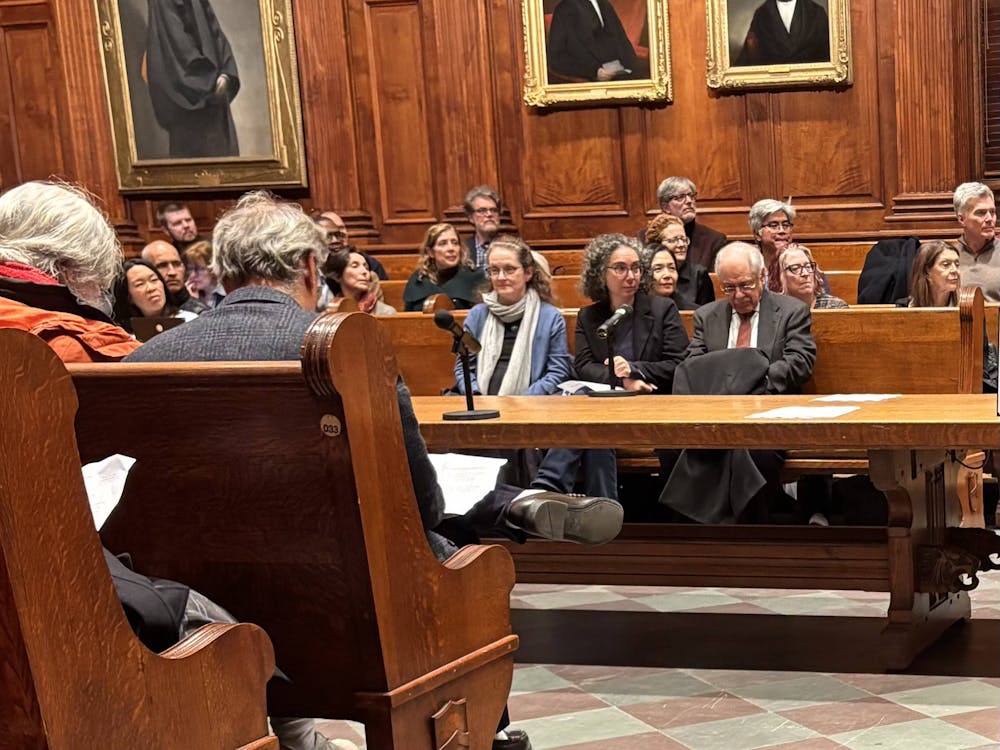In contrast to previous years, when Core Lab students have chosen their own lab partners, students enrolled in the course this spring were assigned partners by their lab instructors. While instructors explained that partner pairings were not made randomly, students said that instructors did not make clear the criteria on which they made assignments.
Students have expressed concern that they were not notified about the change in the system of lab partner assignment prior to enrollment, and some have speculated that assignments were made on the basis of students’ past academic performance.
Cathy Chen ’14, a CBE student currently in Core Lab, said that she is concerned that the reasoning behind the assignments has not been publicized and has heard rumors from others that the pairings were based on measures like grade point average.
“I’m really curious as to why they won’t tell us,” Chen said. “I have heard from some people that it’s totally random, and I’ve heard from others that we’re paired based on our GPA.”
Because students had been able to choose their Core Lab partners in previous years, Peter Luo ’14 said that several students he knew were upset because they had organized their spring schedules in order to work with their desired partner.
“Most people arranged their schedules so that they would be in the same lab section as the person they wanted to partner with,” Luo said. “I’m sure some people would have had a tough time getting that done.”
The partner pairs were formed by the instructors of Core Lab, professors of chemical and biological engineering Bruce Koel and Robert Prud’homme along with Faith Morrison ’83, a visiting professor of chemical engineering from Michigan Technological University.
Morrison, who led the restructuring of Core Lab, said that the change in the way lab partners are assigned was based on the principles of anti-favoritism and fairness. Though she declined to comment on the specific factors that influenced lab pairings, Morrison said that the assignments were not random.
“We don’t have access to tons of information about students,” Morrison said, explaining that the department had access to information such as students’ majors and certificates. “We know a few things and made some assignments and hoped for the best. It was somewhere between random and informed.”
“We used whatever information we had and we made a call,” she added.
The Office of the Registrar confirmed that professors do not have direct access to student transcripts.
Morrison said that students would benefit from working with partners they had not chosen because this setup would simulate real-world work environments, in contrast to the “elementary school aspect to picking teams” that was produced when students chose their own partners.

“We don’t want an in-crowd and an out-crowd,” she said. “There’s also the idea that another life skill and engineering skill is learning to work with whomever. There’s an advantage to ‘here you go, here’s your partner, make it work.’ ”
Assistant instructor David Bozym GS said that he thought the change made by the faculty members was justified.
“She [Morrison] may have had a reason but it was not communicated to us,” Bozym said. “I don’t think it’s anything out of the ordinary to do this. At other universities, you get assigned to random partners.”
Chen agreed that the assignment of partners better simulated a real lab environment but said that in a workplace, an employee could learn how he or she had been paired with co-workers.
Chemical and biological engineering students generally enroll in Core Lab during the spring semester of their junior year. The course serves as a required capstone lab for CBE concentrators.
According to Morrison, the spring 2013 Core Lab is serving as a trial run and instructors will receive feedback on the lab through an anonymous survey in a few weeks with the transition to the second cycle of the lab course.
In addition to the new partner assignment policy, the structure of Core Lab assignments has also changed. In the past, students went through four lab cycles, shuffling among the same sets of experiments, Morrison said. Reused for every cycle, these experiments came with pre-written instruction packets. Morrison said she immediately saw potential for improvement in the system.
“You’re not really bringing any engineering problem-solving to the problem,” Morrison said of the reused experiments. “It’s what we call a ‘cookbook laboratory.’ ”
To solve this problem, Morrison said that this semester students were given objectives rather than previously outlined experiments, but that these objectives build on experiments completed during the previous cycle.
According to Morrison, this change emphasizes the critical thinking necessary in the lab and better replicates the real engineering world. She added that the exchange of objectives between cycles facilitates conversation between students and explained that groups with objectives building on another group’s previous experiment can reach out to each other for guidance.
Bozym said he approves of this change to the lab cycles.
“There’s a lot more upfront thinking and planning how the experiment should go,” Bozym said. “Ultimately, the students are given more autonomy over the experiment.”
With this change in assignment structure has come a change in the way students are graded, Morrison said. Students are now responsible for approximately half the number of oral and written reports required in previous years. Faculty have also decided to move away from a strict point-grading system to rubrics that encourage critical thinking over an adherence to a set procedure, she added.
“We lightened the grading load in a sense, but we increased our expectations of their critical thinking and of their independence and of their functioning in engineering mode,” Morrison said.
Morrison’s visiting professorship at the University will end after this spring semester.







